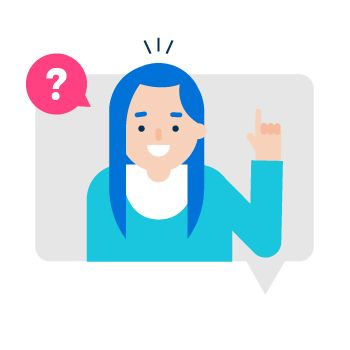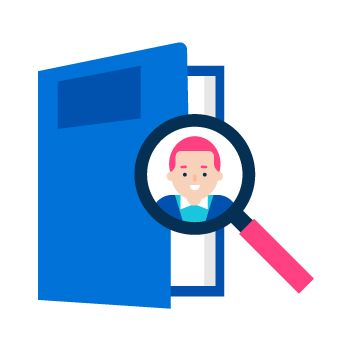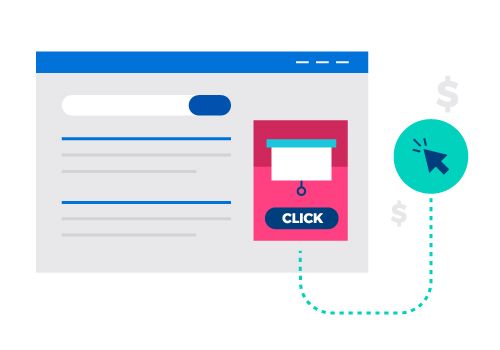How Marketing Agencies Can Use Webinars to Generate Leads

Contents
Webinars have never been more popular. In the year ending April 2020, ON24 reported a 167% increase in webinars run on its platform.
Why are they in such high demand?
For starters, they’re a great way to showcase your expertise and educate your audience. Secondly, they deliver real results, with 73% of B2B marketers and sales leaders seeing webinars as an effective way to generate high-quality leads. On average, between 2% and 5% of attendees will buy.
In this article, I’ll discuss why webinars are such an effective lead generation tactic for marketing agencies, and set out eight steps to running successful lead gen-focused webinars.
Why Use Webinars for Lead Generation?
Webinars require a large time commitment (and, to a lesser extent, budget), particularly if you’ve never held one before, From start to finish, expect to spend four to six weeks coordinating a webinar project. You’ll also need to invest in webinar hosting software and an email list service.
Other content types can be produced at a lower cost, and without any special tools. So why bother using webinars as a lead gen tactic at all? Here are several reasons:
1. Generate Warmer Leads
Because of the high value that people expect to gain from attending webinars, they tend to be more open to sharing their contact information. What’s more, because attending a webinar requires more time and effort than reading a blog or downloading an ebook, the prospects you generate should be both warmer and better qualified.
2. Build Brand Trust
 Interactivity is one of the key elements of a live webinar. Whereas an ebook or a video are a one-way conversation, webinars enable you to speak directly to your audience and respond to their questions in real time. This makes them an extremely effective tool for building trust.
Interactivity is one of the key elements of a live webinar. Whereas an ebook or a video are a one-way conversation, webinars enable you to speak directly to your audience and respond to their questions in real time. This makes them an extremely effective tool for building trust.
3. Engage Your Audience
Three-fifths of people who have attended webinars say they find them engaging. By contrast, just a quarter of people say they read blogs thoroughly, with the vast majority choosing to skim through and pick out the key points.
4. Work With Partners
If you’ve attended multiple webinars, there’s a good chance that at least one was a collaborative effort between two or more brands. Webinars are an excellent chance to partner with companies that share a similar audience to you, and whose services complement your own. This approach has practical benefits, allowing you to:
- Share knowledge, thereby providing greater value for your audience
- Share marketing efforts and tap into one another’s email lists, thereby generating a larger audience and more leads
8 Steps to Running a Successful Lead Generation Webinar
Think webinars could be a key tactic in your lead generation strategy? Follow these eight steps to give yourself the best chance of success.
1. Know Your Audience
Webinars are just like any other content marketing tactic – if you don’t understand your audience, your messaging will be wrong, so you won’t deliver the results you need.
On a simple level, how well does your webinar audience know your brand?
If they signed up via a social ad and are completely unfamiliar with your company and service, you should spend a chunk of time during the webinar on building rapport and sharing your brand story.
Alternatively, if you’re solely promoting your webinar to an existing email list of people who know your brand but are yet to buy your service, you should cut down the introduction and dive right into the main content to keep their attention.
At the same time, you should speak to your sales team to better understand audience pain points. These key business challenges will help you develop a relevant, engaging topic for your webinar.
2. Set Clear Goals
Clearly, you’re not just running a webinar for the enjoyment – you’re doing it to deliver specific results. Defining the goals you want to achieve will help you create an impactful webinar.
As you’re reading this article, your objective is presumably to generate leads. In that case, you need to instantly dispel any notion of basing the webinar around promoting your services. People are signing up to hear something of real value, not a sales pitch.
When setting goals, bear in mind that delivering a webinar is about more than just the end product. Set smaller KPIs for each part of the webinar process, such as:
- How many people you want to sign up for the webinar
- The number of people who actually attend (on average, 55% of registrants convert to attendees)
- How many of those prospects convert into leads
3. Identify Potential Partners
 Earlier on, I mentioned the benefits of running your webinar in collaboration with a complementary brand.
Earlier on, I mentioned the benefits of running your webinar in collaboration with a complementary brand.
Now that you’ve defined your webinar audience and understood the goals you want to achieve, you can look around for a potential partner.
To do this, draw up a shortlist of brands you’d like to work with. Ideally, they should:
- Offer a product or service that complements your own
- Serve a similar audience to you
- Have a similar level of brand awareness
That last point is important. If you work with a smaller, less well-known brand, you risk putting in all the work while they reap all the benefits. And if you partner with someone far better known than yourself, there’s a chance they’ll attract all the attention.
Found a partner? Draw up a promotion plan and service-level agreements to hold both parties accountable for doing all the necessary work.
4. Create Your Webinar Content
Only at this point, once you’ve done all the upfront planning, should you actually start work on your webinar content.
Hopefully, your earlier audience profiling and discussions with your sales team will have given you a broad theme.
Now, hone in on a niche within that theme. Your goal here is to keep the webinar succinct. Almost half of attendees say the ideal length of a webinar is 30 minutes, so your topic should be easily tackled in that time. For example, rather than an extensive guide to SEO, it could be an introduction to link-building for small businesses.
Next, create a rough framework so you know what to do with those 30 minutes. Your ideal structure will depend on your audience and goals, but it could look like this:
- Intro and framing ~5% of webinar length
- Brand story ~10%
- Valuable information ~60%
- Your offer (how you can help) ~10%
- Q&A ~15%
Given the importance of grabbing and keeping your audience’s attention, you should incorporate as many interactive elements as possible. As well as a question-and-answer session, consider:
- Creating key takeaways that attendees can share on social during the webinar
- Encouraging group chats
- Running a live poll
5. Build a Registration Landing Page
You could have an amazing theme and exceptional content, but if your registration landing page is poor, you won’t generate the leads you deserve.
Within seconds of landing on the page, visitors must understand exactly why they should sign up for your webinar. To do that, utilize the following best practices:
- Include a compelling headline (H1 tag) that makes it instantly clear they’re in the right place
- Add a short video to build rapport and tease your webinar content
- Highlight key takeaways (without giving too much away) through bullet-pointed copy
- Write a call to action that compels the user to sign up and speaks to the benefits they’ll enjoy from doing so
- Build credibility by mentioning partner brands or high-profile speakers
- Create urgency by stressing that spaces are limited and adding a countdown timer
6. Choose Your Platform
There are lots of webinar platforms available – and as webinars become increasingly popular, expect the market to grow further. Currently, the most popular include:
- WebinarJam
- GoToWebinar
- Zoom
Each has its benefits, and there’s no definitive answer as to which is best. The important thing is to use the platform you feel most comfortable operating single-handedly, because you’re practically guaranteed to experience some kind of technical hitch on the big day.
7. Promote Your Event
 Generating as many high-quality leads as possible means promoting your webinar to the right people, on the right platforms, at the right time.
Generating as many high-quality leads as possible means promoting your webinar to the right people, on the right platforms, at the right time.
There are lots of ways to promote a webinar – and you’re a marketing agency, so you likely know how to generate awareness. But in my experience, the most effective tactics include:
- Sending email sequences to your mailing list (and that of your partner brand, if relevant)
- Referencing the webinar in other marketing content, such as newsletters, blogs, and social posts
- Targeting your salespeople to sign up a certain number of attendees
- Running pay-per-click ads on Facebook, Google, and LinkedIn
- Advertising on third-party newsletters that are popular with your audience
8. Do a Trial Run
By this point, you’ve done all your planning. But that doesn’t mean you can rest on your laurels. Especially if this is your first webinar, it’s absolutely essential to stage a full run-through.
Use the same technology you’ll be using on the day, set up in the same environment, and ask someone to sign in as a guest to test your broadcast platform. That way, you’ll be able to identify practical stumbling blocks – like an off-putting background, terrible lighting, or deafening traffic noise – before they ruin the real event.
Planning to use interactive elements, like live polling or group chats? Test those too. And run the webinar on different browsers so you can be sure everyone in your audience enjoys the same high-quality experience.





